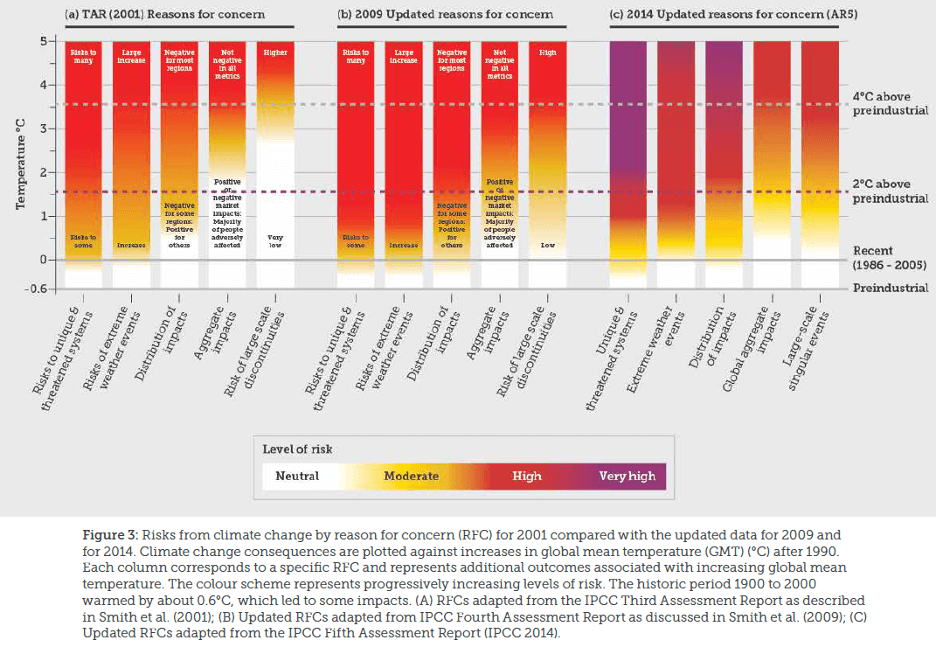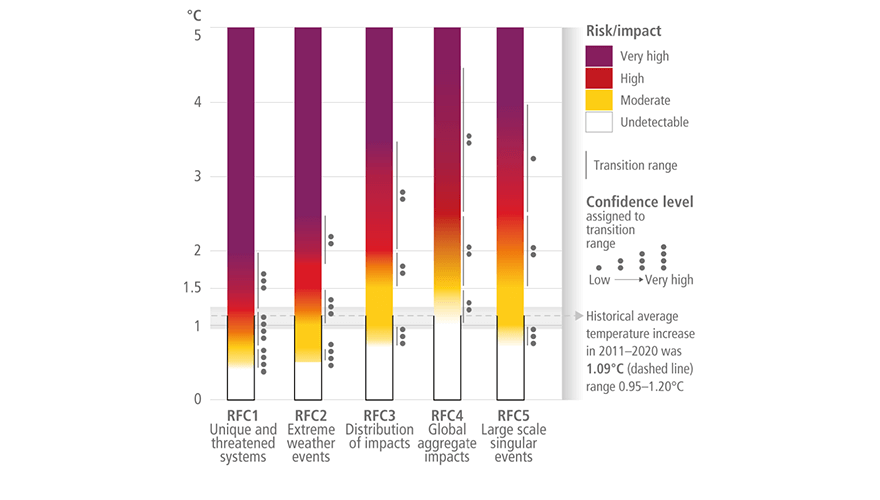The contribution of Working Group II to the IPCC’s Sixth Assessment report, which focuses on the impacts of climate change on humans and natural ecosystems, as well as the potential for adaptation, makes two things clear. First, the risks of climate change to human and natural systems are more severe – and more imminent – than previously recognized. Second, investments in adaptation can help increase resilience to those risks, but right now we are woefully underprepared for the impacts we are already experiencing, let alone those to come. Put those two conclusions together, and you have a picture of a narrow window of opportunity for adaptation that is closing fast.
The WGII report is grounded in, and builds on, conclusions from the report of Working Group I last August, which addressed the physical science of climate change. One key conclusion from that earlier report was that advances in scientific understanding, along with the data provided by continued warming, allow scientists to attribute the severity and intensity of many individual extreme weather events to climate change with a high degree of confidence. In the same way, continued experience with a warming planet has given scientists more evidence and data to understand the full scope of the impacts of climate change on humans and natural ecosystems.
At the most basic level, the latest report confirms what we already know: The damages from climate change are occurring already, in every part of the world. Indeed, the very obviousness of those damages is part of the reason that the report itself can be so definitive: As human activity continues to heat the planet, the evidence of the consequences is accumulating and becoming impossible to ignore. Climate change has increased to the point that the average person experiences its impacts—either directly or simply by reading the news—in the form of record-setting wildfires or heat waves, more severe flooding or drought, or more intense hurricanes. By the same token, there is that much more data for scientists to sift through and analyze. We continue to run an uncontrolled experiment on the planet’s future, and the results are coming in. We can now discern the signal from the noise. That is the context of this report.
The first main takeaway from the new report is: The risks of severe impacts from climate change have increased across the board since the IPCC’s previous assessment report, published in 2014. Those risks are greater than previously understood at temperature levels we have already reached or are rapidly approaching.
Taken together with the findings of WGI, this conclusion underscores a sobering reality: We are on a collision course with catastrophic climate change, with the risks becoming more severe as they come into view, even as we continue to drive temperatures up by emitting greenhouse gases into the atmosphere.
These risks are captured in the “reasons for concern” diagram (colloquially known as the “burning embers” chart), which presents a qualitative assessment of the severity of climate risks across several categories. First introduced in 2001 in the IPCC Third Assessment Report, the “reasons for concern” diagram has progressively identified more severe risks over time:


